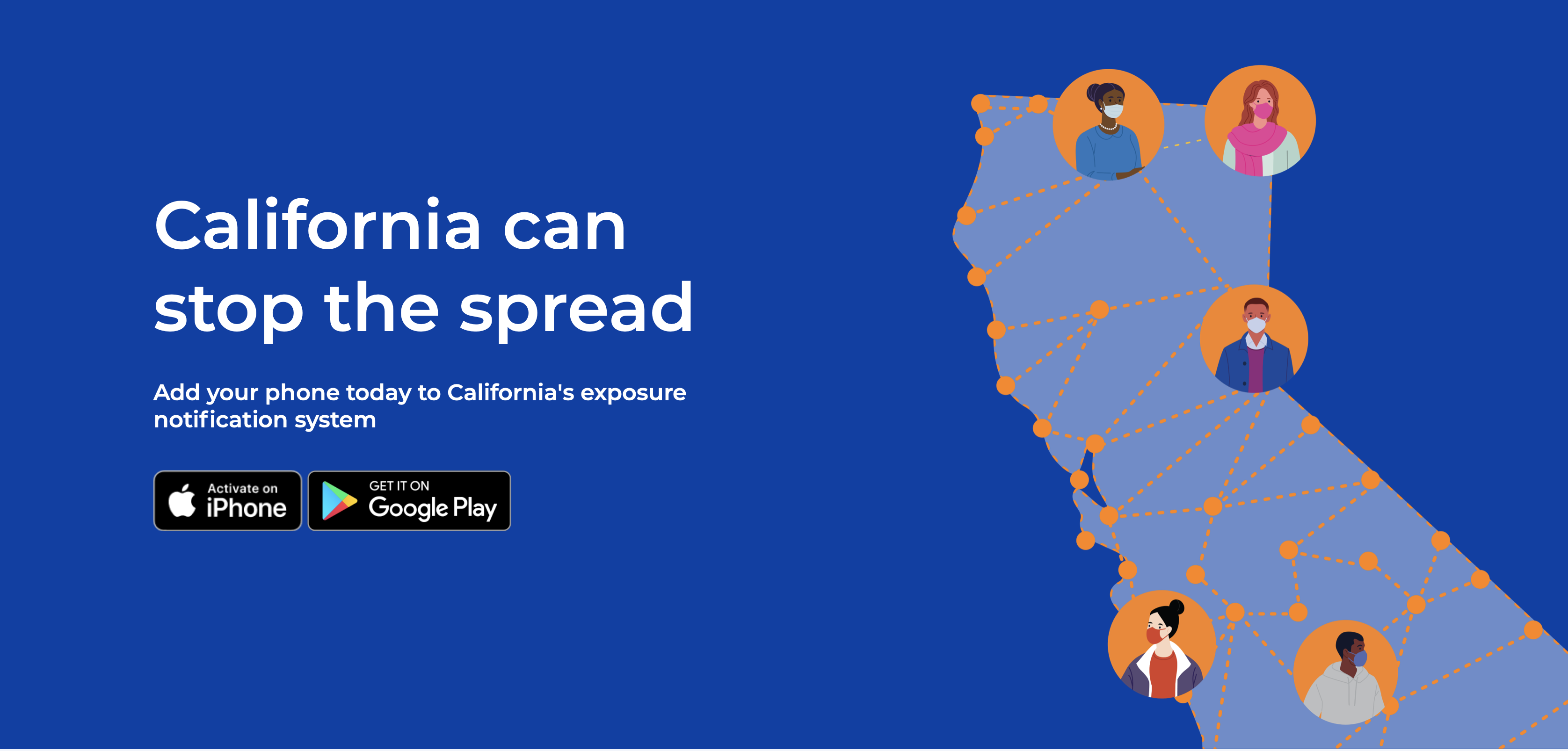CA Notify, a statewide exposure notification system launched on Dec. 10, is the latest digital tool Stanford is using for its pandemic response strategy.
As the University prepares to welcome half the undergraduate population to campus for the winter quarter, the app may aid efforts to control viral transmission, according to a Stanford IT article.
The CA Notify app was developed jointly by Google and Apple and piloted at the University of California campuses. Supported by the California Department of Public Health (CDPH) and Gov. Gavin Newsom, the app was being used by about 6.5 million Californians as of Dec. 14.
The app uses Bluetooth technology to alert users of potential COVID-19 exposure without tracking their identity or location, according to the CA Notify website. Users are assigned randomly generated keys that are shared when they come within six feet of each other for 15 or more cumulative minutes. If a user tests positive, they can voluntarily enter a code sent by the CDPH to anonymously alert close contacts from the past 14 days.
At UC San Diego, the location of CA Notify’s first pilot study, the app was “not a magic bullet” but “a really important component” in the school’s fall reopening plan, said Christopher Longhurst, chief information officer at UC San Diego Health and former clinical professor of pediatrics and biomedical informatics at Stanford.
“Our data suggests that at least 50 to possibly over 75% of the student body is running the app,” Longhurst told The Daily in an interview. He added that the benefits of the app were apparent — despite a surge in positivity rate in San Diego County, the student body maintained a less than 1% positivity rate. Stanford’s positivity rate was also less than 1%, with the current overall positivity rate at 0.17%.
Stanford Chief Information Officer Steve Gallagher is optimistic about the app’s potential to benefit the Stanford community and California. At Stanford, the CA Notify app complements Health Check, a digital tool that uses daily self-reports to monitor symptoms, exposure and travel for students and staff who are living or working on campus.
Director of Strategic Health Initiatives and Innovation Rajan Puri said in a Stanford IT article, “CA Notify would be one more tool that could amplify what we’re already doing and provide broader population coverage and contact tracing for unknown contacts statewide, rather than just known contacts at Stanford.”
Longhurst emphasized that while the app is not a replacement for contact tracing, the benefit of exposure notifications is the ability to notify strangers who unknowingly contacted an infected person.
“It’s easy to notify your family or your suitemate in your dorm that you may have exposed them,” he said. “The hard part is notifying the person on the bus, or the train, or the plane, or the college party, whose name and number you don’t have.”
He added that as a record-breaking average of 35,000 new cases are being diagnosed daily in California, the majority of people now getting COVID-19 don’t know where they were exposed.
Leila DeSchepper ’24, a California resident who recently downloaded the app, said she wanted to take “every precaution” to protect her at-risk grandmother who lives with her.
“I think it’s my responsibility to know my potential exposures as best I can in order to help curb transmission and flatten the curve,” she said.
Theo Makler ’24 has remained indoors due to his city’s lockdown measures but said he “figured there wasn’t any reason” not to install the app. When his sister’s boarding school used a similar app to track cases among a student population of around 500, only one or two cases were observed. In his perspective, the benefits of activating the app “vastly outweigh” the potential drawbacks.
The main reason why most people choose not to activate the app is due to concerns with privacy, according to Longhurst.
State officials and the app’s creators say the app is highly protective of personal privacy. Experts like professor of law and medicine Michelle Mello wrote in an email to The Daily that the privacy protections may be “a little too much for [her] taste as a public health professional.”
Mello wrote that because the app makes it optional to notify health officials of positive COVID-19 tests, it has “traded off some disease fighting value in order to make the app more palatable to customers and maximize the number of users.” She believes it is a “laudable effort” but is still uncertain about whether it strikes the best balance between preserving privacy while also maximizing efficacy in curbing COVID-19 cases.
As of mid-December, about 25% of smartphone users in California have activated the app, but Longhurst suggests also looking at — and taking advantage of — micro-populations within the state, such as college campuses, where there are much higher user rates.
“The state is not going to encourage everybody to sign up, but if Kaiser encourages their patients to sign up and Stanford encourages their students to sign up, we’re going to see much higher adoption in areas like that,” Longhurst said.
One common misconception about the app is that it “only works when you have half the population using it,” but Longhurst noted that an Oxford University study found that a “15% uptake of an exposure notification system could reduce infections by 15% and deaths by 11%.”
Beyond using the app for its ability to identify potential exposures, it also needs to be complemented with resources and information instead of just notifying people and leaving them without any help, according to associate professor of pediatrics and medicine Jason Wang.
“I think blue-tooth based exposure notification can be useful if there is also a good system to triage and monitor those exposed for testing and quarantine, and health care when they get sick,” he wrote in a statement to The Daily.
Contact Athena Xue at axue8 ‘at’ stanford.edu and Jodie Meng at jomeng ‘at’ stanford.edu.
